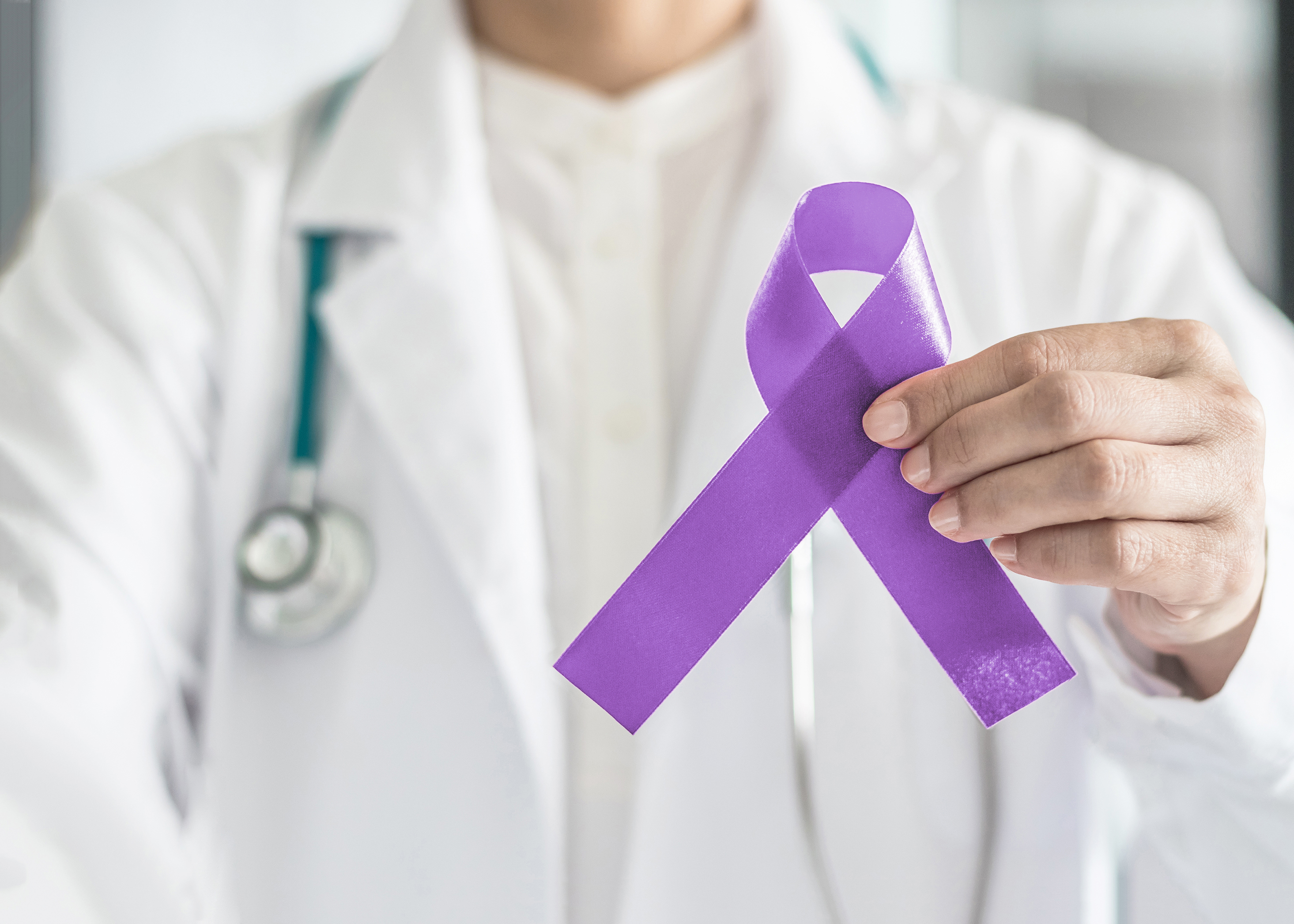
November is Pancreatic Cancer Awareness Month, a time when the Pancreatic Cancer Action Network (PanCAN) calls for renewed commitment to funding research and early detection initiatives.
The death of beloved “Jeopardy!” host Alex Trebek earlier this month has also brought increased attention to the devastating effects of pancreatic cancer, and the current lack of a viable cure for those diagnosed in the later stages of the disease.
PanCAN recently announced the launch of new, faster clinical trials that will allow experimental treatments to move to the U.S. Food and Drug Administration faster if showing signs of success. “Precision Promise” has shortened the standard clinical trial period to four years and includes caveats that if a drug is not working, it can be pulled from the trial and replaced with another option.
This new initiative will save valuable time in developing new treatments for this disease, according to the PanCAN website.
As with most cancers, early detection allows for greater treatment success for pancreatic cancer. PanCAN has even shared recent stories of pancreatic cancer patients who discovered diagnoses early thanks to warning from Trebek on the popular game show he hosted for decades.
There are several ways to screen for pancreatic cancer, including endoscopic ultrasound (EUS).
Endoscopic retrograde cholangiopancreatography (ERCP) may be used to establish a diagnosis. ERCP, performed with a duodenoscope, is also used for biopsies and palliative treatment.
A Devastating Diagnosis
The American Cancer Society projects more than 47,000 people will have died from pancreatic cancer by the end of 2020. More than 57,000 cases will be diagnosed.
These sobering statistics are not lost on physicians. For gastroenterologists, delivering news of a pancreatic cancer diagnosis is “absolutely devastating,” says Dr. Adam J. Goodman, section chief of gastroenterology and director of endoscopy at New York University Langone Hospital-Brooklyn.
Goodman is an advanced endoscopist who performs EUS and ERCP procedures daily. During ERCP, considered one of the most difficult endoscopic procedures, physicians can treat and diagnose diseases of the gallbladder, biliary system, pancreas, and liver. Physicians can also both confirm diagnosis of and offer palliative treatment for pancreatic cancer using ERCP.
“The goal [of ERCP] is for diagnosis and to reduce the biliary obstruction, or alleviate the biliary obstruction, so that they can be treated,” Goodman said. “You can’t give certain chemotherapies if the bilirubin levels are too high, because a lot of them are metabolized by the liver and if bile drainage gets backed up it can cause damage to the body.”
PanCAN offers several resources for patients living with this disease, from information about support groups to tips for self-advocacy during treatment.
Current Endoscopic Treatment
Early detection of pancreatic cancer is challenging and rare, because there are few symptoms associated with the disease, Goodman said. Screening for the disease, even those patients considered high risk, is not widely practiced.
“I fight with insurance companies all the time to do screening procedures,” Goodman said. “There is some literature looking at high-risk populations and doing screening MRI or with endoscopic ultrasound or both. Nobody really is able to do that regularly outside of studies.”
EUS or ERCP are usually done to establish the diagnosis after a patient presents with symptoms such as painless jaundice or unexplained abdominal pain or weight loss and imaging that demonstrates a potential cancer or “mass” on a CT scan or MRI.
Physicians can perform ERCP to place a stent to palliate the jaundice and relieve obstruction of the bile duct. This will allow bilirubin levels to come down and chemotherapies to be given, Goodman said.
ERCP for palliative treatment is all about making patients more comfortable and able to tolerate chemotherapy, said Dr. Frank Gress, chief of Gastroenterology and Hepatology at Mount Sinai South Nassau Hospital.
Another reason ERCP may be performed on a pancreatic cancer patient is to prepare a patient for surgery, Gress said. EUS and ERCP can play an important role in staging the pancreatic tumor and preparing the patient for surgery.
As with any patient undergoing ERCP, there are inherent risks for complications like bleeding or pancreatitis. Pancreatitis can be serious and even delay treatment of pancreatic cancer.
“Every procedure can turn into something not great,” Goodman said. “You need to know what you’re doing when you’re doing the procedure so you can prevent some of those bad things from happening.”
Infection Risk for Cancer Patients
“Getting an infection during an ERCP could turn a bad situation into something worse,” Goodman said.
Given the potential increased risk of infection for immunocompromised patients, there is an argument for using single-use technology to protect them from cross-contamination, according to Gress.
“ERCP brings infection risk to any patient undergoing the procedure but can be especially dangerous for cancer patients. Cancer patients are immunocompromised because of the presence of a tumor, or the chemotherapy that is fighting a tumor,” Gress said.
While single-use duodenoscopes are relatively new to the market, Gress said he believes they may offer an alternative option to conventional ERCP instruments for treating cancer patients.
“For patients who are at high risk, having a scope with disposable components may allow for less of a chance of getting an infection from an outside source," he added. "Of course, further studies will be needed to answer this question.”
Duodenoscope-associated infections have caught the attention of the U.S. Food and Drug Administration in recent years. The average rate of contamination for patient-ready duodenoscopes is 15 percent, studies show. The FDA has encouraged manufacturers to develop duodenoscopes with disposable components to make cleaning and disinfection easier. The agency has also awarded 510(k) clearance to two single-use duodenoscopes.


